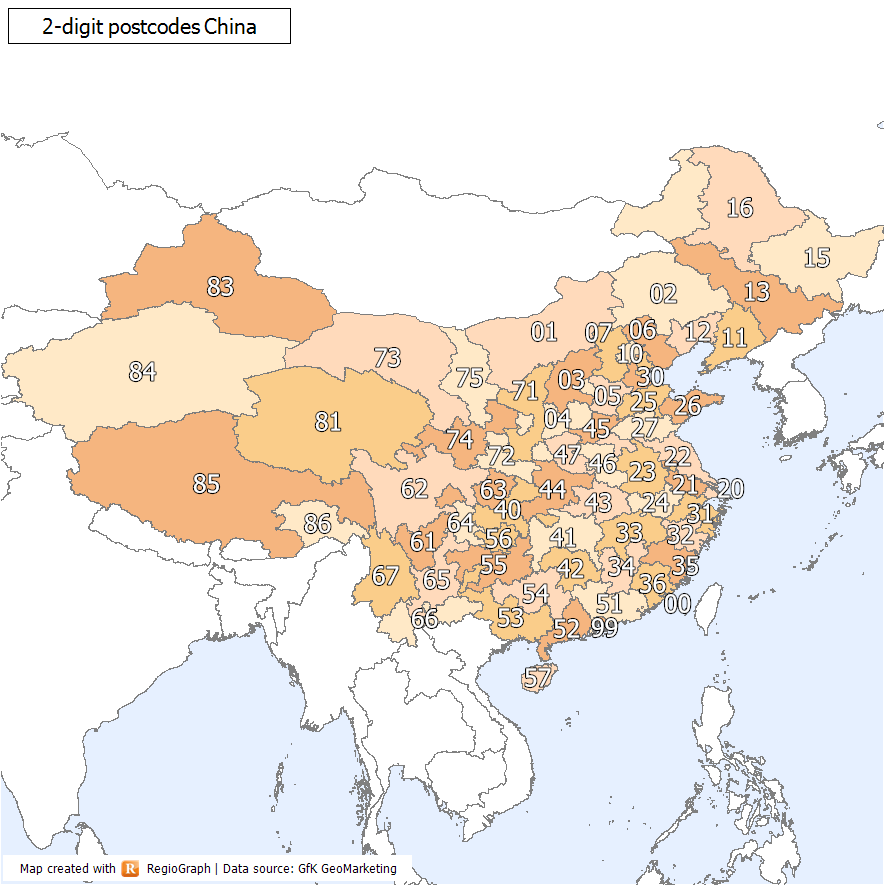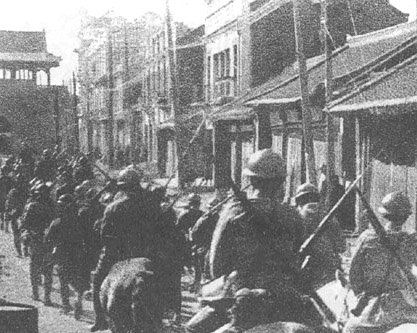|
Tai'erzhuang District
Tai'erzhuang District ( zh, s=, t=臺兒莊區, p=Tái'érzhuāng Qū) is the southernmost of five districts under the administration of the prefecture-level city of Zaozhuang. The district is located in the south of Shandong Province, China, bordering Jiangsu province to the south. It covers an area of and has a population of 290,000. According to the seventh population census data, as of 0:00 on November 1, 2020, the permanent population of Taierzhuang District was 305,102. In 2009, Taierzhuang was designated by the Taiwan Affairs Office as China's first "Cross Strait Exchange Base". The district was the site of the Battle of Taierzhuang fought between the armies of the Chinese Kuomintang and Imperial Japan in 1938 during the Second Sino-Japanese War. The site of the battle ( zh, labels=no , s=, p=Tái'érzhuāng dàzhàn jiùzhǐ) has been listed as a national monument of the People's Republic of China since 2006 (resolution number 6-981). Administrative divisions As of 201 ... [...More Info...] [...Related Items...] OR: [Wikipedia] [Google] [Baidu] |
Postal Code Of China
Postal codes in the China, People's Republic of China () are postal codes used by China Post for the delivery of letters and goods within mainland China. China Post uses a six-digit all-numerical system with four tiers: the first tier, composed of the first two digits, show the provinces of China, province, province-equivalent direct-controlled municipalities of China, municipality, or autonomous regions of China, autonomous region; the second tier, composed of the third digit, shows the postal zone within the province, municipality or autonomous region; the fourth digit serves as the third tier, which shows the postal office within prefectures of the People's Republic of China, prefectures or prefecture-level city, prefecture-level cities; the last two digits are the fourth tier, which indicates the specific mailing area for delivery. The range 000000–009999 was originally marked for Taiwan (The Republic of China) but is not used because it not under the control of the People' ... [...More Info...] [...Related Items...] OR: [Wikipedia] [Google] [Baidu] |
Second Sino-Japanese War
The Second Sino-Japanese War was fought between the Republic of China (1912–1949), Republic of China and the Empire of Japan between 1937 and 1945, following a period of war localized to Manchuria that started in 1931. It is considered part of World War II, and often regarded as the beginning of World WarII in Asia. It was the largest Asian war in the 20th century and has been described as The Asian Holocaust, in reference to the scale of Japanese war crimes against Chinese civilians. It is known in China as the War of Resistance against Japanese Aggression. On 18 September 1931, the Japanese staged the Mukden incident, a false flag event fabricated to justify their Japanese invasion of Manchuria, invasion of Manchuria and establishment of the puppet state of Manchukuo. This is sometimes marked as the beginning of the war. From 1931 to 1937, China and Japan engaged in skirmishes, including January 28 incident, in Shanghai and in Northern China. Chinese Nationalist and C ... [...More Info...] [...Related Items...] OR: [Wikipedia] [Google] [Baidu] |
Shanghai
Shanghai, Shanghainese: , Standard Chinese pronunciation: is a direct-administered municipality and the most populous urban area in China. The city is located on the Chinese shoreline on the southern estuary of the Yangtze River, with the Huangpu River flowing through it. The population of the city proper is the List of largest cities, second largest in the world after Chongqing, with around 24.87 million inhabitants in 2023, while the urban area is the List of cities in China by population, most populous in China, with 29.87 million residents. As of 2022, the Greater Shanghai metropolitan area was estimated to produce a gross metropolitan product (GDP (nominal), nominal) of nearly 13 trillion Renminbi, RMB ($1.9 trillion). Shanghai is one of the world's major centers for finance, #Economy, business and economics, research, science and technology, manufacturing, transportation, List of tourist attractions in Shanghai, tourism, and Culture of Shanghai, culture. The Port of Sh ... [...More Info...] [...Related Items...] OR: [Wikipedia] [Google] [Baidu] |
Nanjing
Nanjing or Nanking is the capital of Jiangsu, a province in East China. The city, which is located in the southwestern corner of the province, has 11 districts, an administrative area of , and a population of 9,423,400. Situated in the Yangtze River Delta, Nanjing has a prominent place in Chinese history and Chinese culture, culture, having served as the historical capitals of China, capital of various Dynasties in Chinese history, Chinese dynasties, kingdoms and republican governments dating from the 3rd century to 1949, and has thus long been a major center of culture, education, research, politics, economy, transport networks and tourism, being the home to Port of Nanjing, one of the world's largest inland ports. The city is also one of the fifteen sub-provincial city, sub-provincial cities in the People's Republic of China's Administrative divisions of the People's Republic of China, administrative structure, enjoying jurisdictional and economic autonomy only slightly les ... [...More Info...] [...Related Items...] OR: [Wikipedia] [Google] [Baidu] |
Yangzhou
Yangzhou is a prefecture-level city in central Jiangsu Province, East China. Sitting on the north bank of the Yangtze, it borders the provincial capital Nanjing to the southwest, Huai'an to the north, Yancheng to the northeast, Taizhou, Jiangsu, Taizhou to the east, and Zhenjiang across the river to the south. Its population was 4,559,797 at the 2020 Chinese census, 2020 census and its urban area is home to 2,635,435 inhabitants, including three urban districts, currently in the agglomeration. Historically, Yangzhou was one of the wealthiest cities in China, known at various periods for its great merchant families, poets, artists, and scholars. Its name (lit. "Rising Prefecture") refers to its former position as the capital of the ancient Yangzhou (ancient China), Yangzhou prefecture in Administration of territory in dynastic China, imperial China. Yangzhou was one of the first cities to benefit from one of the earliest World Bank loans in China, used to construct Yangzhou therma ... [...More Info...] [...Related Items...] OR: [Wikipedia] [Google] [Baidu] |
Grand Canal (China)
The Grand Canal () is a system of interconnected canals linking various major rivers and lakes in North and East China, serving as an important waterborne transport infrastructure between the north and the south during Medieval and premodern China. It is the longest artificial waterway in the world and a UNESCO World Heritage Site. The Grand Canal has undergone several route changes throughout history. Its current main stem, known as the Jing–Hang Grand Canal, is thought to extend for linking Beijing in the north to Hangzhou in the south, and is divided into 6 main subsections, with the southernmost sections remaining relatively unchanged over time. The Jiangnan Canal starts from the Qiantang River at Hangzhou's Jianggan District, looping around the east side of Lake Tai through Jiaxing, Suzhou and Wuxi, to the Yangtze River at Zhenjiang; the Inner Canal from Yangzhou across the Yangtze from Zhenjiang, going through the Gaoyou Lake to join the Huai River at Huai'an, wh ... [...More Info...] [...Related Items...] OR: [Wikipedia] [Google] [Baidu] |
Tengzhou East Railway Station
The Tengzhou East railway station () is a high-speed railway station in Tengzhou, Zaozhuang, Shandong, People's Republic of China. It is served by the Beijing–Shanghai high-speed railway The Beijing–Shanghai high-speed railway (or Jinghu high-speed railway) is a high-speed railway that connects two major economic zones in the People's Republic of China: the Bohai Economic Rim and the Yangtze River Delta.Jinan–Zaozhuang high-speed railway in 2027. References Railway stations in Shandong Railway stations in China opened ...[...More Info...] [...Related Items...] OR: [Wikipedia] [Google] [Baidu] |
Xuzhou East Railway Station
Xuzhou East railway station (; or Xuzhoudong railway station) is a station dedicated for high-speed railways in Xuzhou, Jiangsu, People's Republic of China. It is served by the Beijing–Shanghai high-speed railway and Xuzhou-Lanzhou high-speed railway (Eurasia Continental Bridge passageway). The new station for high-speed rail services was officially put into use on June 30, 2011. It is located at the approximate halfway point between Beijing and Shanghai on the Beijing-Shanghai railway. History On April 18, 2008, Xuzhou East Station officially began construction. After CRH380A rolling stock tests in December 2010, it opened for high-speed rail traffic on June 30, 2011. Expansion An expansion project for the station was announced by the Xuzhou High-Speed Railway Investment Company in August 2017 to change the east square of the station into an "integrated passenger transportation hub". Groundbreaking on the project is expected to begin by the end of 2018. The expanded s ... [...More Info...] [...Related Items...] OR: [Wikipedia] [Google] [Baidu] |
Zaozhuang Railway Station
Zaozhuang railway station () is a railway station in Zaozhuang, Shandong, People's Republic of China. It is served by the Beijing–Shanghai high-speed railway. This railway station is about 60 kilometers from Tai'er Zhuang Ancient Town and 7 kilometers from Zaozhuang West Railway Station. High-speed trains from/to Beijing, Shanghai, Qingdao, Jinan Jinan is the capital of the province of Shandong in East China. With a population of 9.2 million, it is one of the largest cities in Shandong in terms of population. The area of present-day Jinan has played an important role in the history of ... and other cities mainly run through Zaozhuang railway station. Railway Station Address: Southern End of Qilianshan Road, Xuecheng District. References Railway stations in Shandong Railway stations in China opened in 2011 {{Shandong-railstation-stub ... [...More Info...] [...Related Items...] OR: [Wikipedia] [Google] [Baidu] |
Lianyungang Huaguoshan Airport
Lianyungang Huaguoshan International Airport is an airport serving the city of Lianyungang in East China’s Jiangsu province. Opened on 2 December 2021, it is Lianyungang's main airport, with the existing dual-use Lianyungang Baitabu Airport becoming a dedicated military air base. Huaguoshan Airport is located in Xiaoyi Town, Guanyun County, about from the city center of Lianyungang. It is named after Mount Huaguo Mount Huaguo () or Flowers and Fruit Mountain, is a major area featured in the novel ''Journey to the West'' (16th century). A number of real-world locations have been connected with the Mount Huaguo, although the eponymous mountain in Lianyunga ... (Huaguoshan), a major tourist attraction in Lianyungang. The airport have a runway that is long and wide (class 4D). It is projected to handle 2.5 million passengers and 20,000 tons of cargo after completion. The passenger movements of the Airport in 2023 were 1,447,802, making it the 87th busiest airport in Chi ... [...More Info...] [...Related Items...] OR: [Wikipedia] [Google] [Baidu] |
Jining Qufu Airport
Jining Qufu Airport was an airport serving the cities of Jining and Qufu, the hometown of Confucius, in Shandong Province, China. The airport was located 25 kilometers west of downtown Jining. The airport closed on 28 December 2023 when the new Jining Da'an Airport opened. See also *List of airports in China This is a list of public airports in the People's Republic of China grouped by Provinces of China, provincial-level division and sorted by main city or county served. It includes civil airports and certified general airports, but excludes general ... References External linksOfficial website Airports in Shandong Transport in Jining Defunct airports in China Airports disestablished in 2023 2023 disestablishments in China {{Shandong-geo-stub ... [...More Info...] [...Related Items...] OR: [Wikipedia] [Google] [Baidu] |
Linyi Qiyang Airport
Linyi Qiyang International Airport is an airport serving the city of Linyi in Shandong Province, China. It was formerly called Linyi Shubuling Airport ( zh, s=临沂沭埠岭机场) until its renaming to Qiyang on 1 January 2020. In December 2023, CAAC approved Linyi airport to rename International Airport. Airlines and destinations Linyi Airport is served by the following airlines: See also *List of airports in China *List of the busiest airports in China China's busiest airports are a series of lists ranking the 100 busiest airports in Mainland China according to the number of total passengers, including statistics for total aircraft movements and total cargo movements, following the official ... References Airports in Shandong Transport in Linyi Ports of Entry of China {{Shandong-geo-stub ... [...More Info...] [...Related Items...] OR: [Wikipedia] [Google] [Baidu] |








